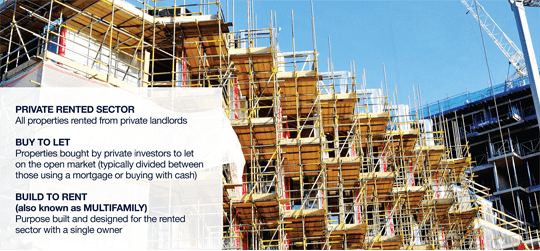Pressure on buy to let…
But now those buy to let investors have not only been hit by a succession of tax policies to “level the playing field” with first time buyers, but also face the prospect of mortgage regulation and much tighter lending criteria.
This has tempered investment by mortgaged buy to let landlords, who have to find a bigger cash deposit to enter the market. Despite a surge prior to the imposition of the additional 3% stamp duty, the number of purchases by this group in the first 11 months of 2016 was 11% down on the same period in 2015. In the month of November they were down a third year on year.
…where cash remains king
By contrast, it appears that other investors have been more active. In the last quarter of the year, just shy of 63,000 purchasers paid the stamp duty levy on acquisitions of additional homes. They delivered receipts of over half a billion pounds to the Treasury. Without those sums, stamp duty receipts would have fallen by 9% year on year. As it was, they rose by 17%. It seems like the 3% surcharge is here to stay – for the time being at least.
This suggests those paying the levy have been dominated by cash investors (including professional large scale investors that do not use buy to let mortgage finance), together with some second home buyers and homeowners who have bought before they have been able to sell.
Despite the apparent resilience of cash buyers, many housebuilders are reporting slower rates of sale of new homes to buy to let investors, most notably in London. Potentially, build to rent (also known as multifamily) can fill the hole left by buy to let.
A place for purpose built build to rent
Importantly, institutional investment has been given a boost in the Housing White Paper. Local planning authorities will have to proactively plan for units specifically designed for the private rental market where there is an identifiable need.
This comes at a time when institutional investors, who are either buying or developing product for the rental market, are beginning to gain some traction.
To date, just 7,800 homes have been completed for this sector in England and Wales. More than 80% of these were essentially standard residential units. However, another 48,000 homes targeted at institutional investment are currently in the pipeline. Of these, more than 70% will be purpose built.
Currently this pipeline is heavily weighted to London, which accounts for 59% of the existing and potential supply. This should not come as a surprise. It is a sector in its infancy. It will take time to mature and expand. Both UK student housing and the US Multifamily sector took 20 to 25 years to do so. We are in year seven.
Why does it matter?
Development of this purpose-built rental product has the ability to increase the supply of much needed good quality, well managed rental stock for a generation entering homeownership at later life stages.
It also has the potential to open up a new market for private housebuilding, that has historically been closely linked to (and limited by) underlying transaction levels.
Critically, as shown in our recent paper for the BPF (Unlocking the Benefits and Potential of build to rent), it can kick start and accelerate large housing and mixed-use development schemes.
It appears well suited to offsite construction at a time when the capacity to deliver new houses through traditional housebuilding is under significant pressure. And there is enough institutional capital pointing at build to rent to add 15,000 homes to housing supply every year until 2030.
Breaking down the barriers
Government intervention now holds the key to accelerating its expansion and unlocking its potential. It has often come second best to homes sold off plan in the open market in the competition for land.
So Multifamily or build to rent needs to be recognised in the planning system. To this end, it needs to be clearly defined so that there is clarity on how proactive planning works in practice.
Then more suitable space standards, car parking requirements and affordable housing contributions can be applied by planners to make schemes deliverable. Here, the Housing White Paper is encouraging and should give the sector a significant boost.
But it would also significantly benefit from a more accommodating tax environment. Specifically, it should be treated sympathetically in terms of stamp duty and VAT.
There is clearly much still to do. But with this support it should be worth its weight in gold to institutions who value a secure income stream, consumers who need more choice and a Government with much clearer ambitions to address the long-term undersupply of housing.

.png)
.png)

.png)
.png)